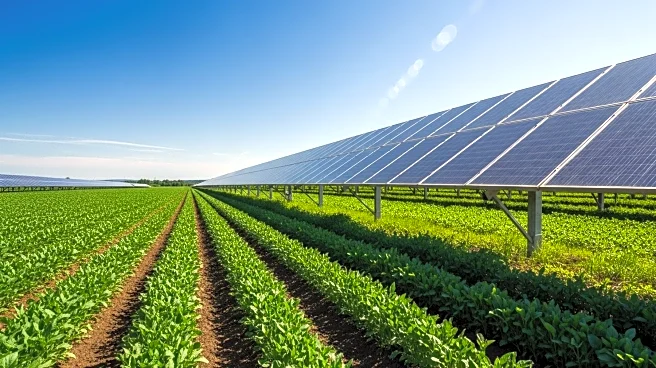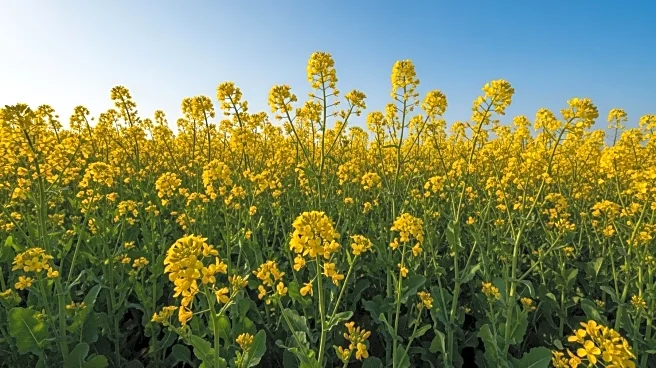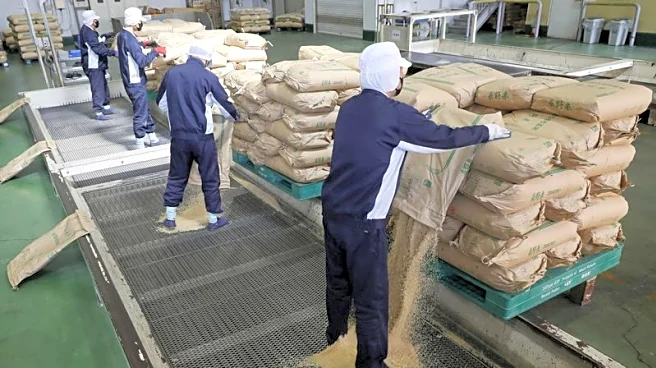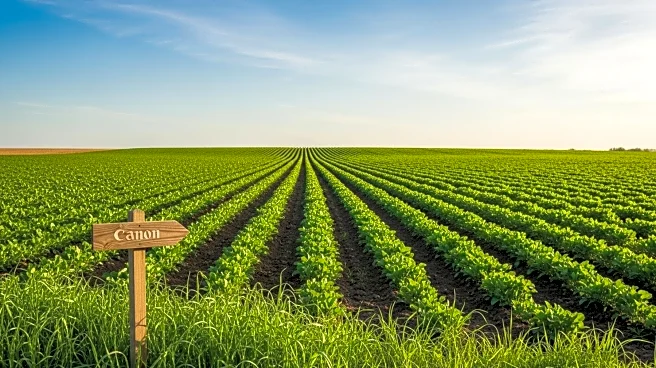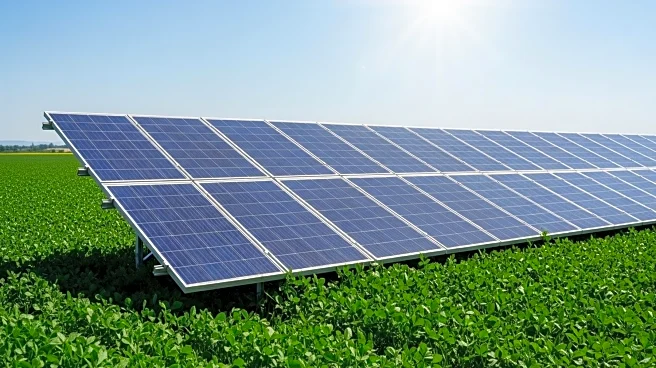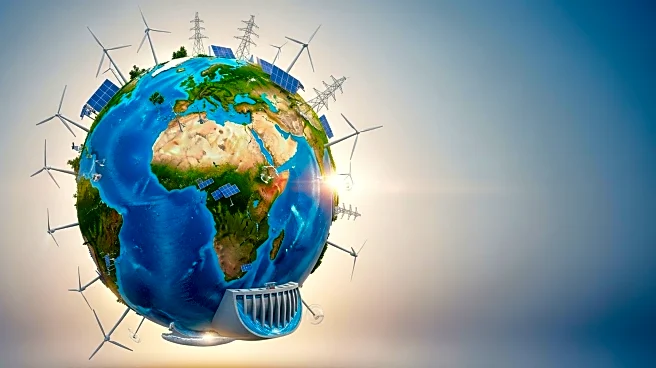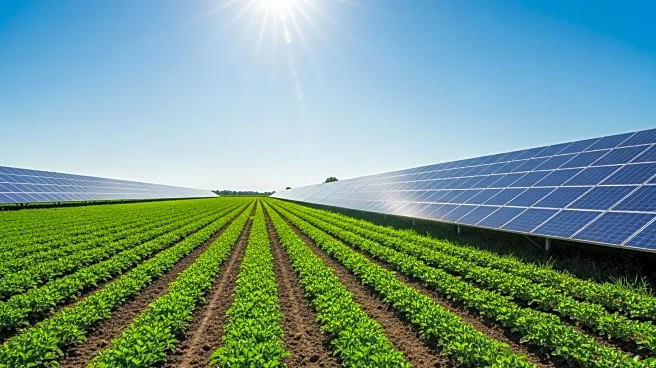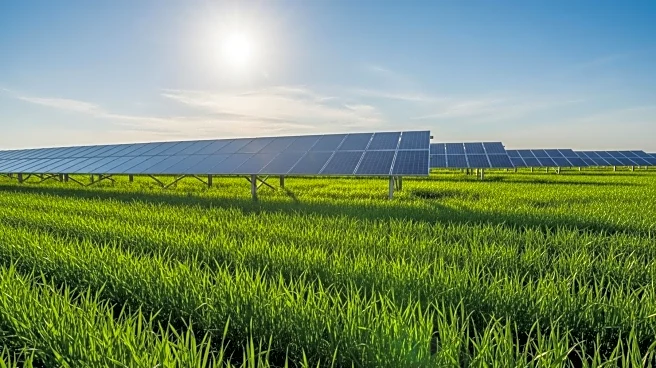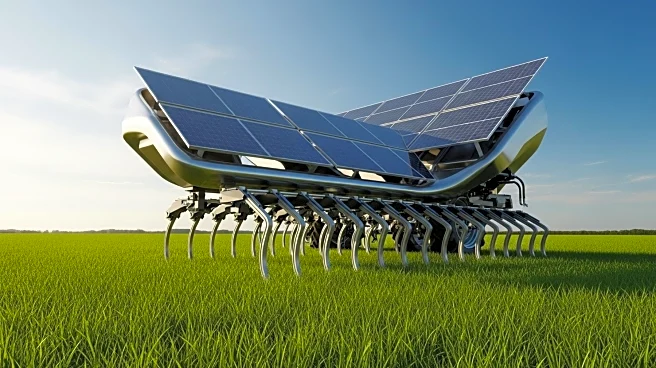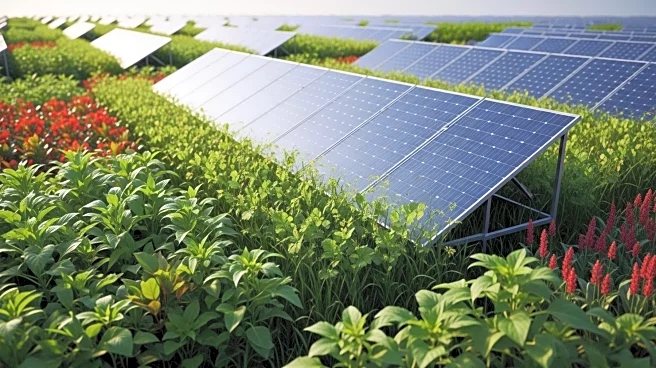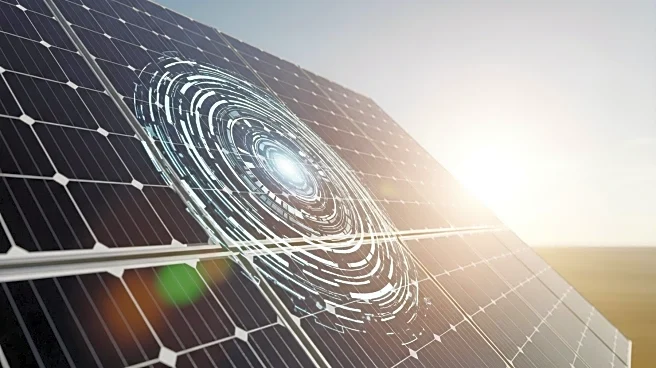What is the story about?
What's Happening?
Researchers from Technische Hochschule Ingolstadt in Germany have created a tool designed to optimize crop selection for agrivoltaics projects across 25 countries. This tool analyzes the response of 12 staple crops to climatic changes, growth patterns, and shading, while considering their water and space requirements. Agrivoltaics, which combines agriculture with solar energy, aims to improve food security and energy efficiency. The tool uses Global Horizontal Irradiance data to identify optimal crops for solar energy zones, areas with high solar potential. The study found that vegetables, berries, and fruit trees benefit from solar panel protection, which reduces water evaporation and shields crops from extreme weather. The research suggests that agrivoltaics can provide higher returns for farmers and allow them to sell excess solar energy back to the grid.
Why It's Important?
The development of this tool is significant as it supports the integration of renewable energy into agriculture, potentially transforming farming practices. Agrivoltaics offers a sustainable solution by conserving land and water while generating additional income for farmers. This approach is particularly beneficial for small-scale farming communities, as it allows for decentralized renewable energy projects and sustainable rural development. By optimizing crop growth and reducing reliance on conventional energy sources, agrivoltaics can contribute to global food security and environmental sustainability. The tool's ability to identify suitable crops for different climates enhances the viability of agrivoltaics, making it a promising option for future agricultural practices.
What's Next?
Future research is expected to focus on AI-driven optimization techniques and real-world pilot studies to refine agrivoltaics deployment. Advanced agronomic assessments will be crucial in improving decision-making processes for Agri-PV systems. As agrivoltaics gains popularity, more agricultural operations may adopt this method to save on electricity costs and optimize crop growth. The continued development and implementation of agrivoltaics could lead to widespread changes in farming practices, promoting sustainability and resilience in the agricultural sector.
Beyond the Headlines
The integration of agrivoltaics into farming practices presents ethical and cultural implications, as it encourages sustainable land use and energy production. This approach aligns with global efforts to combat climate change and reduce environmental impact. By supporting small-scale farmers, agrivoltaics can foster community development and economic empowerment, contributing to social equity and rural prosperity. The long-term shift towards renewable energy in agriculture may also influence policy decisions and investment strategies, driving innovation and collaboration in the sector.
AI Generated Content
Do you find this article useful?
